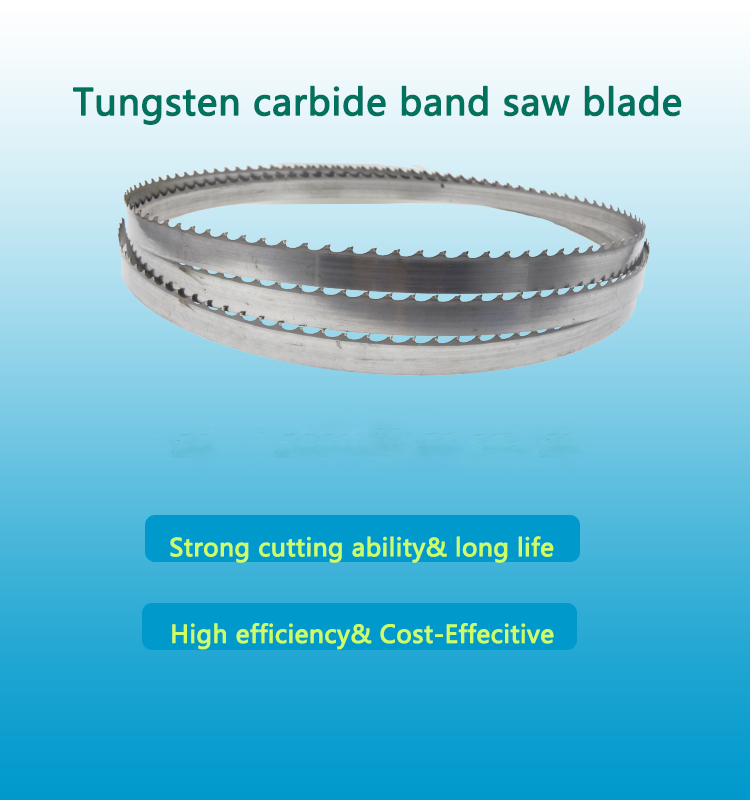Choosing a Blade Set
Choosing an appropriate set provides a balance between sawdust and air in the space between the body of the saw blade and the material it is cutting. A nice appropriate set is about 80/20, with 80% sawdust and 20% air being ejected. The sawdust should be warm when technician touches it, not too hot or too cold.
Too much set results in too much air and not enough sawdust and can leave tooth marks.
Too little set restricts airflow and drags down the blade’s ability to pull sawdust from the cut. This creates hot, packed sawdust and leads to short cutting times and premature blade breakage. This is about the worst thing that you could do for your bandsaw blade.
Excessively under set bands will cut in a wavy motion.
Know Your Surface Feet Per Minute (SFM)
Knowing the SFM for the various settings of your bandsaw allows you to select the proper speed for the material you want to cut. Bandsaw blade manufacturers’ also provide maximum SFM ratings for their products. You should find the SFM settings in your owners manual. If you don’t have the manufacturer’s specs, you can can use this formula:
SFM = Drive Wheel RPM x Drive Wheel Diameter x 0.262
Size Matters!
Using the correct size blade is essential to the performance of your bandsaw. If you don’t have a manual and there are no markings on your machine, follow these steps to determine blade length:
1. Set the pulleys or wheels in working position.
2. Measure the distance between centres on the drive wheels. (C)
3. Measure the radius of the upper and lower drive wheels. (R1 & R2)
4. Calculate blade length with this formula:
Blade Length = (R1 X 3.146) + (R2 X 3.146) + (2 X C)
Pre-Flight Checklist
· Keep it clean on your bandsaw’s table surface, fence and mitre slots. Apply a good paste wax to keep friction to a minimum.
· Round the back of your blades with a file or honing stone. This removes any manufacturing imperfections and prevents scouring of the thrust bearings and binding when cutting curves.
· Keep the blade lubricated, no matter what material you are cutting.
· Clean up sawdust buildup on the blade guide bearings and drive components.
· Remove sawdust and debris from the table insert blade guide.
· Always relax the blade at the end of the day.
De-Tension After Use
Blades get hot from cutting. They expand and contract and, over time, can even over tension themselves. Like getting a flat spot on your tires from sitting in one spot for too long, leaving your blade under tension, strapped around the drive wheels, creates a memory in the steel that could lead to premature failure from metal fatigue. Leaving the band tight on the saw also hurts the crown and flattens the drive tires, making them very solid. Tension also stresses the motor, shaft V-belt and drive pulleys.
So when you’re finished cutting for the day, always relax blade tension. Remember how many turns you need to release tension so you won’t have to keep performing the flutter test every time you want to use the saw again and again.
Maintain Proper Lubrication
Never use water as a lubricant on bandsaw blades —or any other blades, for that matter. Water is not a lubricant at all. It can rust and damage the body and gullets of the bandsaw blade as well as the material being cut.
There are a number of products available that are designed to specifically to lubricate blades, bits and cutting tools. Bostik makes an aerosol called Dri-Cote, which lubricates and protects all types of cutting tools with its dry film technology.
There are also solid compound cutting bars and sticks that you run against the blade to add lubrication. Make sure you choose a product that won’t stain your wood and is appropriate for your intended use.
Closer to home there are a couple of time-tested products that work great for lubricating your bandsaw blades, and it’s related components.
Whatever method you use, lubricating your bandsaw blade body can increase its life by over 30 percent. In each of the above cases, when applied sparingly, you can cut grade lumber with NO staining.
Troubleshooting
Bandsaws are complex pieces of machinery that require periodic adjustments for wear of the bandsaw itself as well as the blade. If you’re having trouble with the cuts your bandsaw blades are giving you, whether you’re cutting wood or metal, this handy passage might be able to point you in the right direction. And if all else fails? Well, c’mon in and see the bandsaw experts at DH Cutter.

